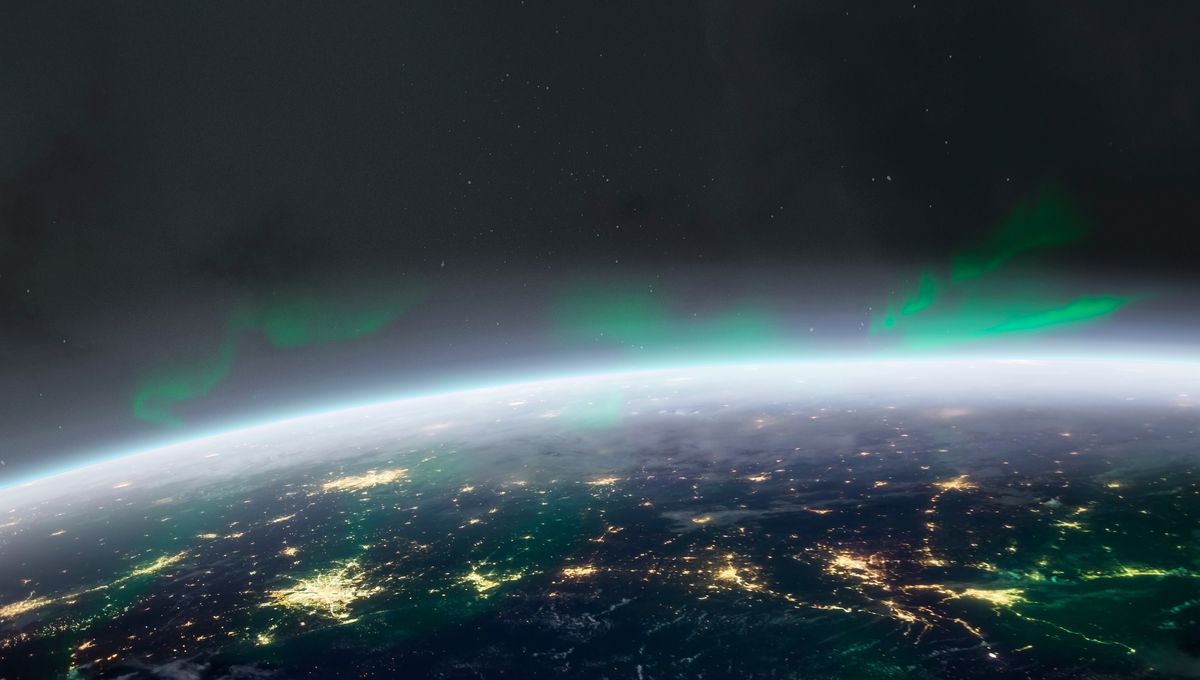
A powerful geomagnetic storm that engulfed our planet three months ago altered the atmosphere in ways that have never been seen before. Among the unique phenomena triggered by the event was the appearance of a huge spiral structure in the thermosphere, as well as the complete obliteration of the ionosphere in the mid-latitude region.
Triggered by a series of seven coronal mass ejections (CMEs) hurled towards us from the sun, the G5 geomagnetic storm of May 10 and 11 was the strongest that has been detected for 20 years and sparked some incredible auroras at latitudes that wouldn’t normally get to enjoy them. Tracking the impact of this bombardment using NASA’s Global-scale Observations of the Limb and Disk (GOLD) instrument, a pair of new studies show how the event distorted the various layers of Earth’s atmosphere.
One of these looked at how temperature and pressure changes altered the arrangement of the thermosphere. Summarizing the study’s findings in a statement, author Scott England explained that the intense rain of charged particles experienced during a geomagnetic storm “makes the atmosphere near the poles very hot, which starts to push air away from the poles and towards the equator.”
Recording a temperature difference of 400 Kelvin, (127°C; 260°F) between the poles and the equator during the storm, the team noted that these changes produced a “previously unseen structure in the upper atmosphere.”
“The morphology seen at mid latitudes and the equatorial region is stunning,” they write, adding that the “large scale structure… [had the] appearance of a swirl or eddy in the structure, suggesting possible rotation” like an enormous hurricane. Describing the gigantic vortex in somewhat quainter terms, England says the storm produced “delightful swirly patterns” in the Earth’s upper atmosphere.
The other study used GOLD to track changes in the ionosphere during the spectacular event. Results showed that a peaked structure known as the Equatorial Ionization Anomaly (EIA) – which normally sits within 10 to 20 degrees of latitude from the equator – moved southwards in the wake of the storm, merging with the aurora itself near the tip of South America.
As the aurora moved northwards towards the equator, the union of these two elements resulted in the complete disappearance of the mid-latitude ionosphere. “This is the first reported observation of the nighttime EIA crest merging with the aurora,” write the study authors.
At present, scientists are unsure what to make of these previously unseen phenomena, although with the solar maximum expected in 2025, we’re likely to see plenty more extreme solar activity in the near future, which should give us ample opportunity to study the effects of geomagnetic storms.
“This data poses a lot of questions,” says England. “Like, did something really different happen during this geomagnetic storm than has happened previously, or do we just have better instruments to measure the changes?”
The two studies are published in the journal Geophysical Research Letters, here and here.
Source Link: May’s Huge Geomagnetic Storm Created A Previously Unseen Vortex in Earth’s Atmosphere